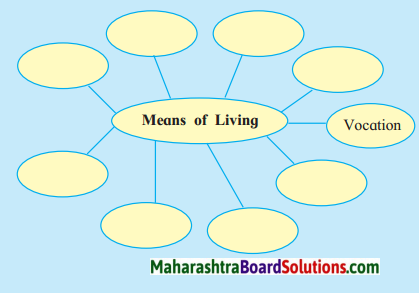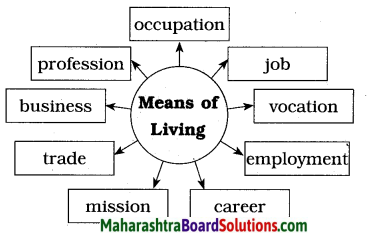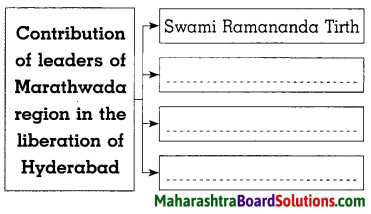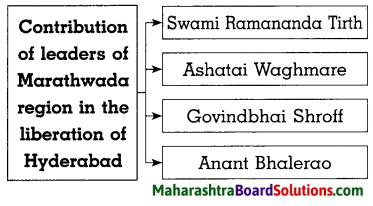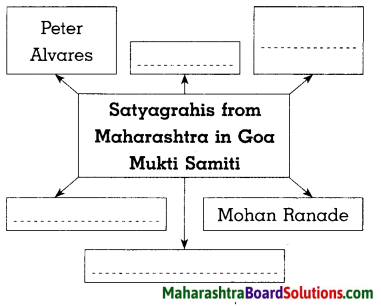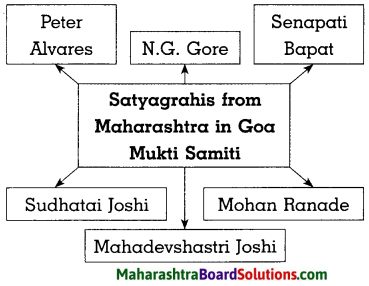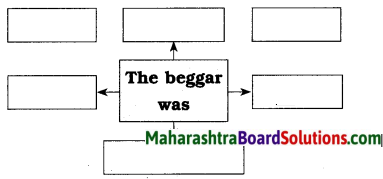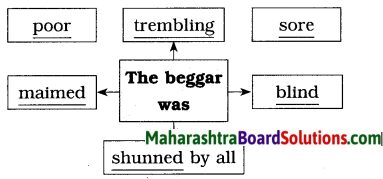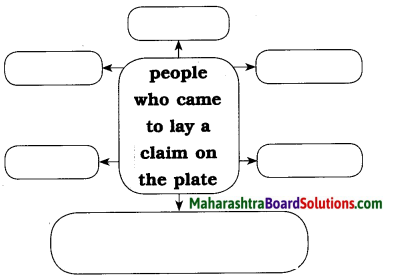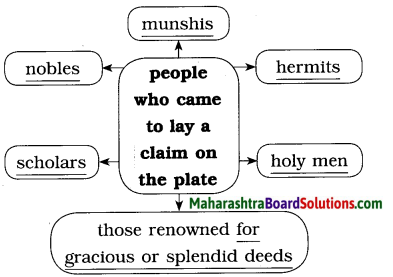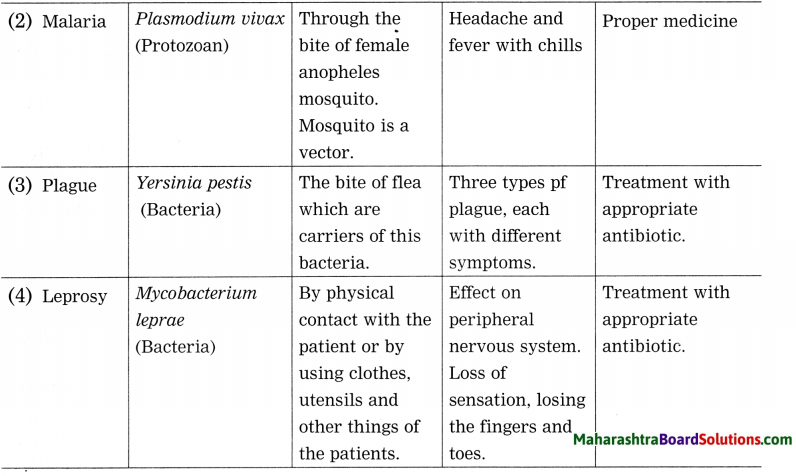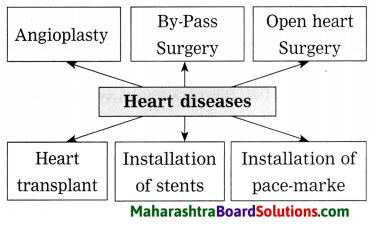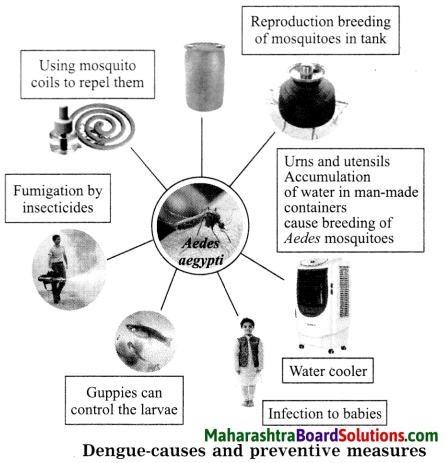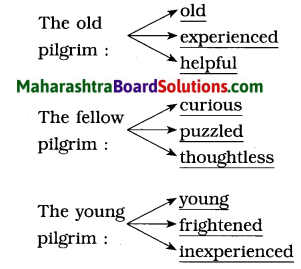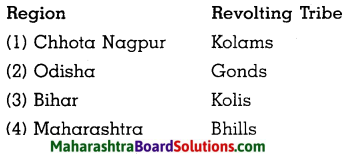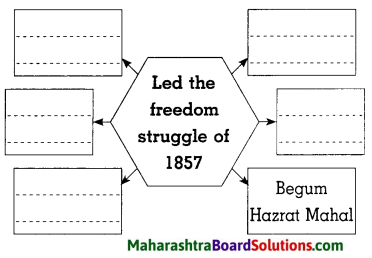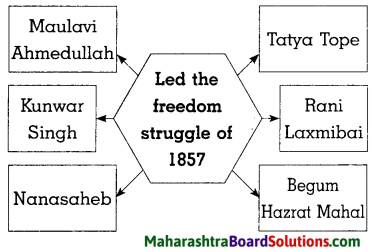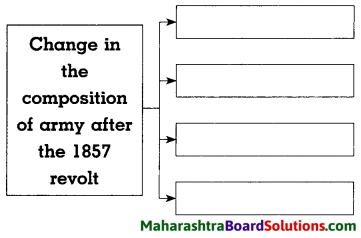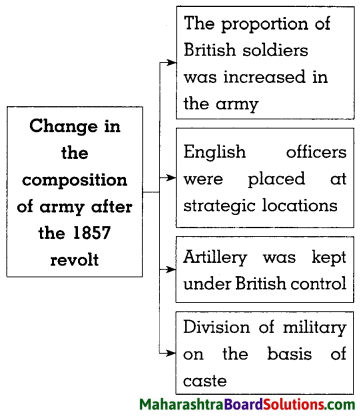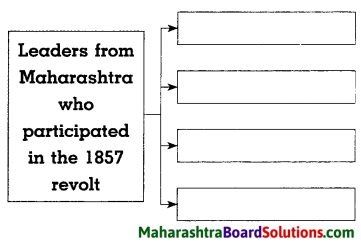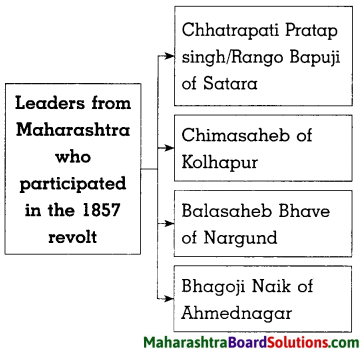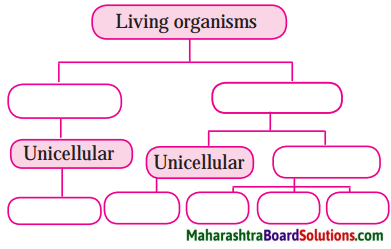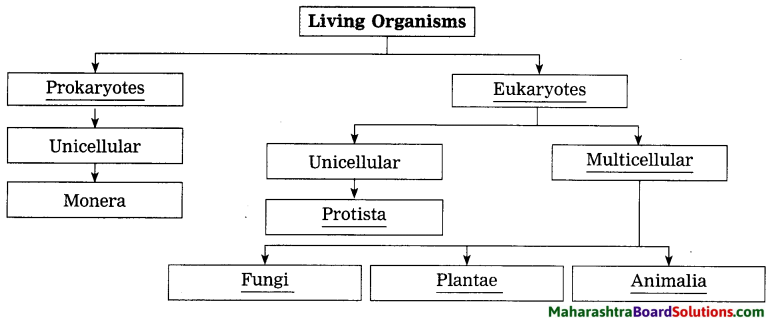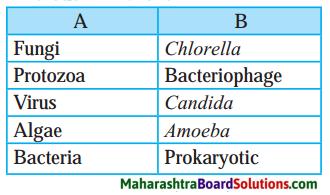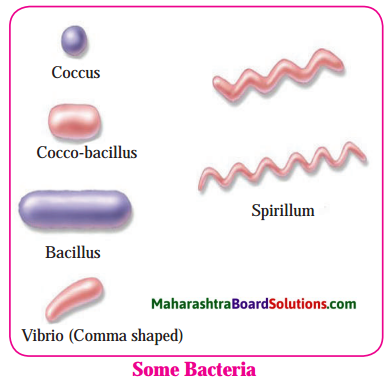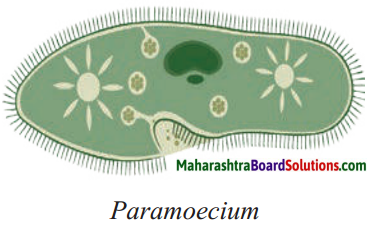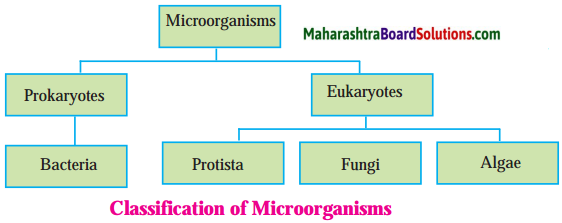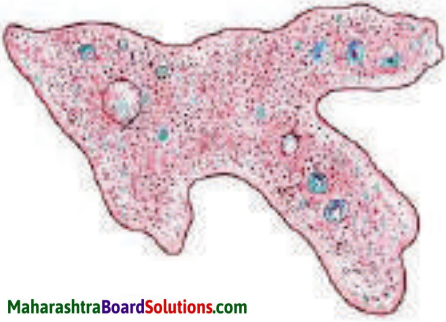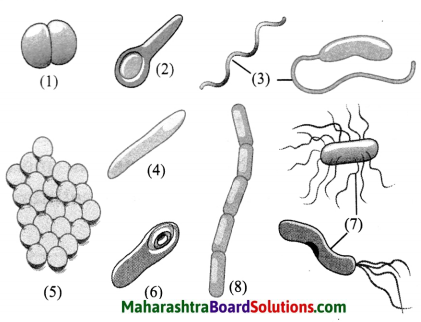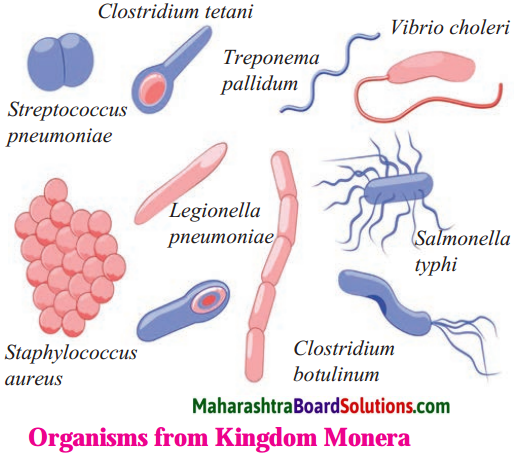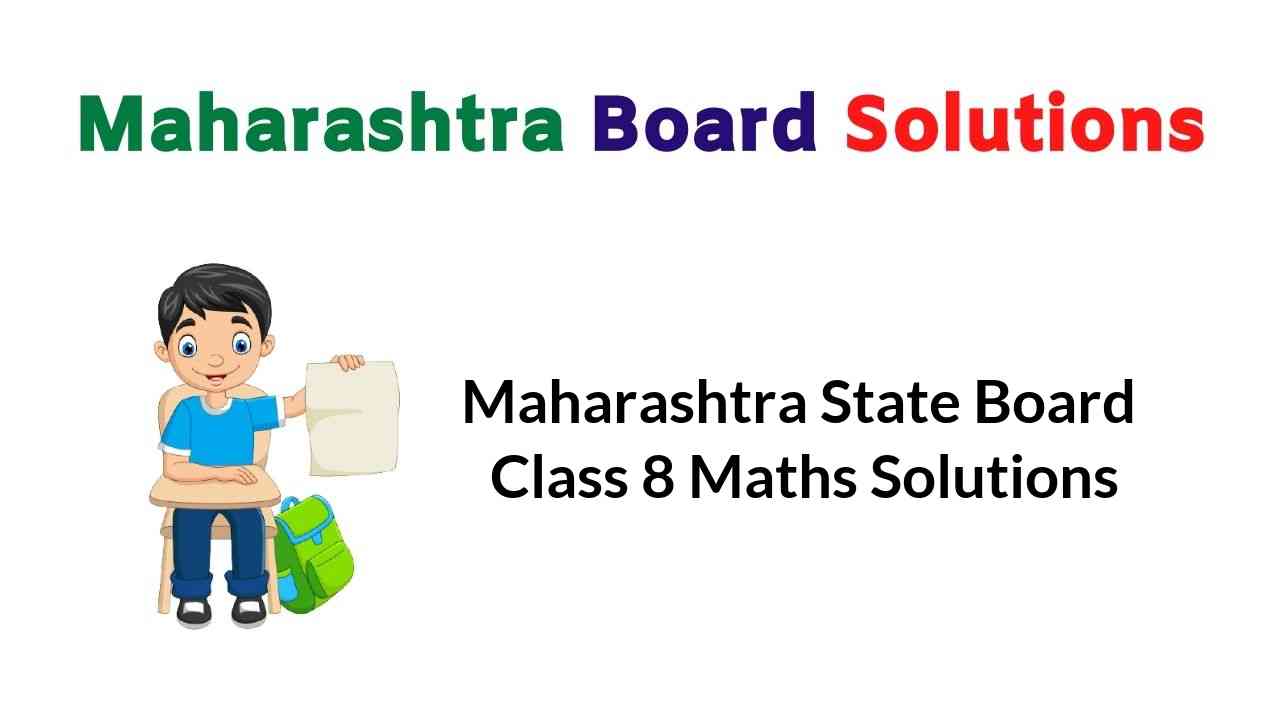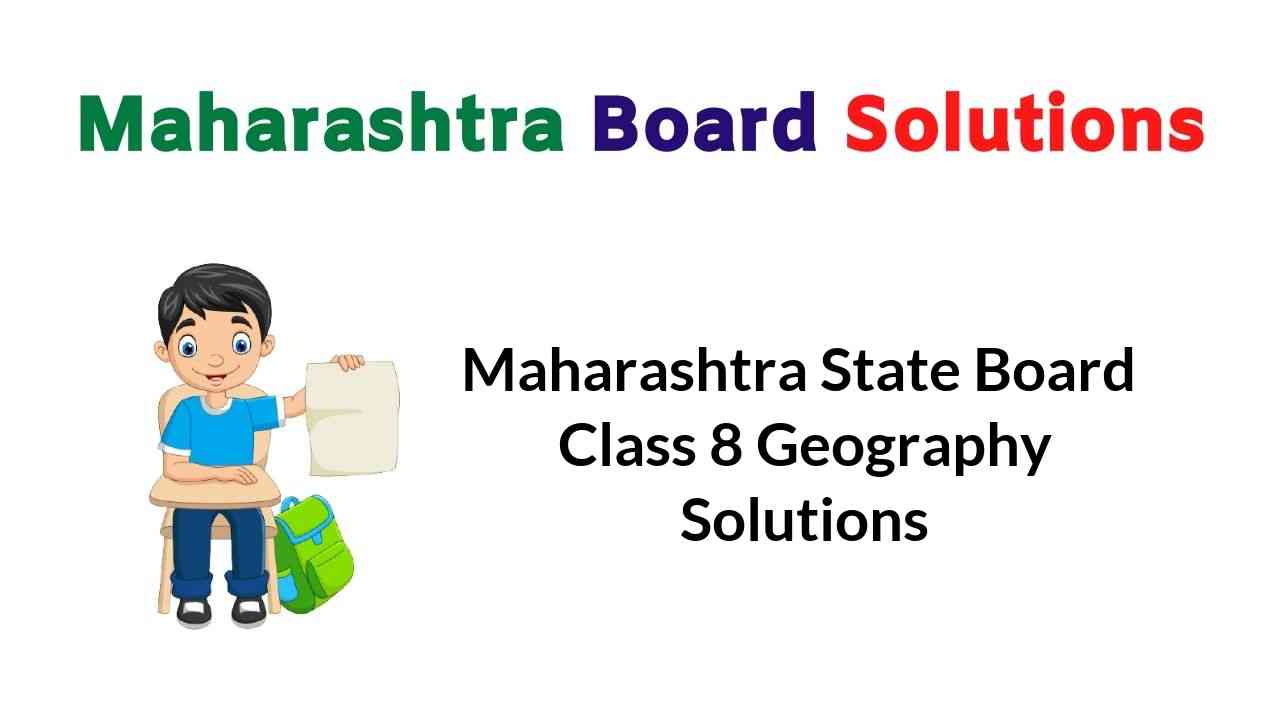Balbharti Maharashtra State Board Class 8 English Solutions Chapter 2.5 The Happy Prince Notes, Textbook Exercise Important Questions and Answers.
Maharashtra State Board Class 8 English Solutions Chapter 2.5 The Happy Prince
Class 8 English Chapter 2.5 The Happy Prince Textbook Questions and Answers
2.5 The Happy Prince Warming Up:
1. There are different types of short stories. Use a dictionary/the Internet and find out what each of the following types refers to:
(a) fable :
(b) anecdote :
(c) fairy tale :
(d) parable :
(e) tragedy :
(f) humorous story :
(g) detective story :
(h) myth :
Answer:
(a) fable: moral bearing story with animal characters.
(b) anecdote: short amusing account of an incident.
(c) fairy tale: having supernatural characters/a moral for children.
(d) parable: having religious base and a message or moral.
(e) tragedy: serious and ends in a tragedy.
(f) humorous story: causing laughter and amusement; comic.
(g) detective story: the plot revolves around the investigation and solving of a crime/s.
(h) myth: originated in ancient times, authorship unknown.
![]()
2. Have you heard of birds that fly from one part of the world to another in small or large flocks?
They are called Migratory birds. Discuss and write down two reasons why they migrate and return.
Answer:
Migratory birds’ migrate for food and for warmth. They return when the food supplies in their home area stabilize and winter changes to summer again.
3. Speech or dialogues can be reported in two ways Direct and Indirect.
When the exact words of the speaker are reported we call it Direct Speech. When the exact words of the speaker are not reported, but just its contents we call it Indirect Speech.
Direct Speech: Amar said, “I shall come to meet you, tomorrow, Sanket.”
Indirect Speech: Amar told Sanket that he would go to meet him, the next day.
Note down the changes you observe in the Indirect Speech.
Answer:
- There are no inverted commas in j Indirect Speech.
- The verb changes in Indirect ) Speech.
- There is a change in the adverb in Indirect Speech.
- The word‘that’is added in Indirect Speech.
1. Say whether these sentences are true or false and correct the false ones.
Question a.
The writer of the story is Wiiliam Blake.
Answer:
False
The writer of the story is Oscar wilde
Question b.
Everyone admired the statue of the Happy Prince.
Answer:
True
![]()
Question c.
The mother was working, when the Swallow brought the yellow jewel.
Answer:
False
The mother was sleeping when the Swallow brought the yellow jewel.
Question d.
The two best things the servants brought to God were gold and jewel stones.
Answer:
False
The two best things the servants brought to God were broken heart and dead bird.
2. Find from the story the Homophones of the following words:
(Words that sound, the same, but differ in spellings and meanings.)
a. weak
b. their
c. blew
d. seo
e. read
f. waste
g. know
h. knot
i. threw
j. right
Answer:
a. weak – week
b. their – there
c. blew – blue
d. sea – see
e. read – – red
f. waste – waist
g. know – no
h. knot – not
i. threw – through
j. right – write
3. Answer the given questions in your own words:
Question a.
Where was the Happy Prince’s statue located?
Answer:
The Happy Prince statue located high above the city.
Question b.
Why did the swallow decide to stay under the statue of the Happy Prince at night?
Answer:
The Swallow decided to stay under the statue of the Happy Prince at night because it was high up, and so there was plenty of fresh air.
![]()
Question c.
Why was the Prince sad?
Answer:
The Prince was sad to see all unhappiess of the city.
Question d.
What was the first task given to the Swallow?
Answer:
The Happy Prince asked the Swallow to take the great red jewel from his waist and give it to a poor woman whose son was ill and hungry. This was the Swallow’s first task.
Question e.
To whom did the Prince gift the two gemstones of his eyes?
Answer:
The prince gave one of the two gemstones of his eyes to a Door little girl whose eggs had fallen to the ground and broken.
Question f.
What decision did the Swallow finally make? Was it a wise one? Comment.
Answer:
The Swallow finally decided not to go to Egypt but to remain with the Happy Prince, whom he loved very much. It may not have been a wise decision because it led to the death of the Swallow, but it was a decision made from the heart and was an emotional decision that was rewarded in heaven.
Question g.
Why did the Swallow finally decide not to leave the Prince?
Answer:
The Swallow finally decided not to leave the prince because he loved him very much.
![]()
Question h.
What message do you get from this story?
Answer:
The message that we get from this story is that we should be loyal, generous, and compassionate. We will not only get peace when on earth but will also get appreciation and reward in heaven.
4. inflnitives, Participles, Gerunds:
(a) Infinitives
In the sentences ‘1 have to study’ and ‘ I must study’, ‘study’ is in the infinitive form, because it does not take -s, -es or -cd aller it even if the number or person of the Subject changes.
Infinitives are generally preceded by ‘to’ or sometimes by a modal auxiliary.
(b) Participles
In the sentences ‘She dived into the swimming pool’ and ‘The writing table is in a mess’ ‘Swimming’ and ‘writing’ are in the verb + ing form and function as Adjectives. These are Present Pcirticiples. In the sentences, ‘The police recovered the stolen jewels’ and ‘He bandaged his
bruised arm’, stolen and bruised are in the verb + en I ed form and function as Adjectives.
(c) Gerunds
In the sentences, ‘I love swimming’ and ‘Reading is a good habit’, the verb + ing form fuction as Nouns (as the Subject or Object). These are called Verbal Nouns or Gerunds.
Say whether the underlined are Infinitives/Participles (Present or Past) Gerunds.
2.5 The Happy Prince 8 Question 1.
I wish to go to Egypt.
Answer:
Infinitive
The Happy Prince Question Answer Question 2.
They liked his written stories.
Answer:
Participle(past)
The Happy Prince Class 8 Question Answer Question 3.
He is trying to finish a story.
Answer:
Infinitive
![]()
The Happy Prince Questions And Answers Class 8 Question 4.
Suffering is stranger than anything.
Answer:
Gerund
The Happy Prince Story Questions And Answers Question 5.
The dying swallow fell at his feet.
Answer:
Participle(Present)
The Happy Prince Class 8 Solutions Question 6.
He began to cry.
Answer:
Infinitive
Happy Prince Question And Answer Question 7.
He watched the working seamen
Answer:
Participle(Present)
5. Write the following dialogues from the story in the Indirect Speech:
(a) ‘Who are you?’ asked the bird. ‘I am the Happy Prince.’
‘Then why are you crying? I am wet with your tears.’
(b) The Happy Prince looked very sad, and the little Swallow was sorry for him. ‘It is very cold here,’ he said ‘but I will stay with you for one night. Tomorrow I will take the jewel.’
‘Thank you, little bird,’ said the prince.
(c) ‘Little bird, little bird,’ said the prince, ‘please will you stay with me for one more night?’
‘My friends arc waiting for me.’ answered the bird.
(d) Under a bridge, two little boys were lying close together to keep warm.
‘We are so hungry!’ they said. ‘You cannot lie there!’ shouted a guard.
(e) ‘Goodbye, dear prince!’ he said.
‘I urn glad that you are going to Egypt,’ said the prince. ‘You have stayed too long.’I am not going to Egypt,’ said the Swallow. ‘I am going to the House of God’
6. Divide the story into parts. Make 4 groups in your class. Each group should take one of the 4 parts to convert the story into a play and enact your part.
![]()
7. If you could change the end of the story i.e. after the Swallow refused to fly to Egypt. how would you change it? Summarise your idea in 10 to 12 lines.
Answer:
Summary of the idea : A MIRACLE
The Swallow, battling the bitter cold, refuses to fly to Egypt and continues to live with the prince to support him in his time of need. God sees this love and friendship among the two and decides to do something. He restores the prince to his glory. The Happy Prince becomes golden and beautiful once again and is admired by all. The little Swallow develops extra layers of feathers to protect him from the cold, and the two continue to live with each other. The prince continues to be generous, but his wealth never diminishes. The Swallow is his messenger and informant. They become immortal. The two realize that these miracles are the work of God and they look towards heaven to thank God.
8. Think of one of your favorite stories. Fill in the following facts about the story:
- Name of the story:
- Type of story:
- Setting (time and place):
- ImportQnt characters:
- Theme/Plot:
Conflict/Dilemmu: - Solution:
- End:
Answer:
- Name of the story: Pride and Prejudice
- Type of story: Romantic/Social
- Setting (time and place): the early 1800s in England
- Important characters: Elizabeth and Jane Bennet, Mrs. Bennet, Darcy.
- Theme/Plot: The emotional development of the main characters.
- Conflict/Dilemma: Darcy is rich and proud Elizabeth is strongly prejudiced against him. Their status and
- lifestyles differ. However, they are attracted to each other.
- Solution: How they overcome their prejudices and come together forms the main story of the novel.
- End: Darcy and Elizabeth overcome their prejudices and their true emotions come through. The end is a happy one with everything ending well.
Class 8 English Chapter 2.5 The Happy Prince Additional Important Questions and Answers
Say whether the following sentences are True or False and correct the false ones:
Question 1.
One night a little swallow flew over the city with his friends.
Answer:
False
Corrected Sentence: One night a little l swallow flew alone over the city
![]()
Question 2.
The Happy Prince saw that the Swallow was crying.
Answer:
False
Corrected Sentence: The Swallow saw that the Happy Prince was crying.
Question 3.
The Swallow felt sorry for the Happy Prince.
Answer:
True
Complete the following:
Question 1.
The Happy Prince’s statue was located ______.
Answer:
high above the city
Question 2.
The drops that fell on the swallow were ______.
Answer:
the tears from the eyes of the Happy Prince
Question 3.
The Swallow decided to stay under the statue of the Happy Prince at night ; because ______.
Answer:
it was high up, and so there was ; plenty of fresh air
Question 4.
The Prince was sad _________.
Answer:
to see all the unhappiness of the city
Question 5.
The first gift from the Happy Prince was _______.
Answer:
a great red jewel from his waist
Question 6.
he Swallow felt warm because ______.
Answer:
he had done a good thing
![]()
Question 7.
The clever man was surprised _____.
Answer:
to see a swallow in the city in winter
Question 8.
The prince gave a _____ one of the two gemstones of his eyes.
Answer:
poor writer
Question 9.
The writer was trying hard ________.
Answer:
to complete the story
Question 10.
It was easy to get into the young man’s room because __________.
Answer:
there was a hole in the roof
Question 11.
The Swallow refused to take off the other eye because _______.
Answer:
then the prince would not be able to see
Question 11.
The prince gave one of the two gemstones of his eyes to _______.
Answer:
a poor little girl whose eggs had fallen to the ground and broken
Question 13.
Use the word ‘see’ and its ’ homophones in a single sentence of your own.
Answer:
sea-see: The children went all the way from Indore to Mumbai to see the sea.
Pick out the finite and non-finite verbs in the following sentence:
And he decided to fly away.
Answer:
decided-finite verb;
to fly-non- finite verb.
![]()
Personal Response:
Have you ever observed statues and admired them? Name some.
Answer:
I admire statues which Eire artistic or tell us a story. For example, some of the statues of Shivaji are very well carved, with all the details. However, most of the time j statues in India are neglected, and only ! serve as resting places for birds.
Give reasons:
Question 1.
The mother was forced to ignore her ailing son.
Answer:
The mother was forced to ignore her ailing son as she did not have money to buy food, and could only give him water from the river. She was busy making a ; dress for one of the queen’s ladies. After doing this, she was so tired that she fell asleep.
Question 2.
What was the first task given to the Swallow?
Answer:
The Happy Prince asked the Swallow to take the great red jewel from his waist and give it to a poor woman whose son was ill and hungry. This was the Swallow’s first task.
Question 3.
The Swallow wished to go to Egypt.
Answer:
It was winter, and it would soon begin snowing. The Swallow would not be able to bear this cold weather. So, he wished to go to Egypt where the sun was warm and the leaves were green.
Find from the passage the Homophones of the following words:
- read
- threw
Answer:
- read-red
- threw-through
Write the noun forms of the following words:
- poor
- flew
- warm
- ill
Answer:
- poverty
- flight
- warmth
- illness
![]()
Complex Factual Activities:
Question 1.
Why was the writer unable to complete his story?
Answer:
The writer was very cold, weak and hungry. There was no fire in his room. Due to all these reasons, he was unable to complete his story.
Question 2.
What did the writer conclude when he saw the blue jewel?
Answer:
When the writer saw the blue jewel, he concluded that it was a gift from someone who had read and liked his books.
Rewrite as an affirmative sentence:
But he is very cold and he cannot write.
Answer:
But he is very cold and he is unable to write.
Personal Response:
Have you seen birds migrating/flying in groups or information?
Answer:
Yes, I have. I did not realize what it meant in the beginning, but later I saw a documentary film about migratory birds. I like the way they fly in a formation, all of them flying at the same speed. I often wonder how they know where to go and what to do.
Complete the table and write who said the given words and to whom:
Question 1.
| The words | Who said them | To whom |
| (1) You cannot see now | ||
| (2) She has no money to take home. | ||
| (3) This is a beautiful piece of glass! | ||
| (4) You must go to Egypt |
Answer:
| The words | Who said them | To whom |
| (1) You cannot see now | The Swallow | The prince |
| (2) She has no money to take home. | The prince | The Swallow |
| (3) This is a beautiful piece of glass! | The little girl | The Swallow |
| (4) You must go to Egypt | The prince | The Swallow |
![]()
Complete the table:
Question 1.
| Positive | Comparative | Superlative |
| strange | ||
| beautiful | ||
| dear | ||
| wonderful |
Answer:
| Positive | Comparative | Superlative |
| strange | stranger | strangest |
| beautiful | more beautiful | most beautiful |
| dear | dearer | dearest |
| wonderful | more wonderful | most wonderful |
Underline the pronouns in the following sentences:
Question 1.
She is selling eggs. her eggs have fallen on the ground and they are broken.
Answer:
She is selling eggs. Her eggs have fallen on the ground and they are broken.
Question 2.
“I will stay with you,” repeated the Swallow, and he slept at the Prince’s feet.
Answer:
“I will stay with you,” repeated the Swallow, and he slept at the Prince’s feet.
Personal Response:
How does the suffering of other people affect you?
Answer:
I feel very bad when I see someone suffering. I don’t like to see even animals suffer, and I often have fights with boys who are cruel to animals. If I see someone suffering, I try to help them if it is possible. I plan to become a doctor when I grow up so that I can help those who are in pain.
![]()
Complete the table and write who said the given words to whom:
Question 1.
| The words | Who said them | To whom |
| (1) You cannot lie there! | ||
| (2) Yes, you have brought the right things. |
Answer:
| The words | Who said them | To whom |
| (1) You cannot lie there! | A guard | Two little boys |
| (2) Yes, you have brought the right things. | God | His servants |
Complex Factual Activities:
Question 1.
Describe the sufferings that the Swallow discovered and reported to the prince.
Answer:
The Swallow saw poor people sitting at the gate. He flew into the dark streets, where he saw hungry and sad children. Many children were cold and were treated badly by the guards in the city. These were the sufferings that the Swallow discovered and reported to the prince.
Question 2.
In what state did the important man in the city find the statue?
Answer:
The important man in the city found the statue looking dull. The red stone and the gemstones of the eyes had disappeared. The statue was not golden any longer, and looked like that of a beggar. There was also a dead swallow at the feet of the statue.
Question 3.
Why did the servants of God take the broken heart and the dead bird to God?
Answer:
The servants of God took the broken heart and the dead bird to God because they were the two best things in the city.
![]()
Question 4.
Why did the Swallow finally decide not to leave the prince?
Answer:
The Swallow finally decided not to leave the prince because he loved him very much.
Question 5.
What decision did the Swallow ; finally make? Was it a wise one? Comment.
Answer:
The Swallow finally decided not to go to Egypt but to remain with the Happy Prince, whom he loved very much. It may not have been a wise decision because it led to the death of the Swallow but it was a decision made from the heart, and was an emotional decision which was rewarded in heaven.
Question 6.
What, do you think, was the part of the statue which did not melt?
Answer:
The part of the statue which did not melt was the heart of the Happy Prince.
Question 7.
What message do you get from this story?
Answer:
The message that we get from this story is that we should be loyal,generous and compassionate. We will not only get peace when on earth but will also get appreciation and reward in heaven.
Do as directed:
Question 1.
Pick out two compound words from the lesson.
Answer:
bedroom, daytime
Question 2.
Use the following phrase in your own sentence : to get in
Answer:
The thief found it difficult to get in through the narrow opening.
Question 3.
Underline the non-finite verb and say what type it is :
The boy is crying and his mother is so unhappy.
Answer:
The boy is crying and his mother is so unhappy.
crying – present participle
Question 4.
Find out four hidden words from the given word : (Each word should have at least 3 letters.)
flower
Answer:
flower: lower, flow, wolf, wore
![]()
Question 5.
Use the following word and its homophone in a single sentence : heard
Answer:
The lion heard the herd of buffaloes chasing him.
Question 6.
Rewrite using a clause in place of | the underlined phrase :
I played with my friends in a very beautiful garden.
Answer:
I played with my friends in a garden which was very beautiful.
Question 7.
Rewrite as an affirmative \ sentence :
I did not know what lay on the other l side.
Answer:
I was unaware of what lay on the j other side.
Question 8. Punctuate :
I will stay here he thought it is high up so there is plenty of fresh air :
Answer:
“I will stay here,” he thought. “It is high up, so there is plenty of fresh air.”
Question 9.
Pick out the modal auxiliary and state its function :
I must find another place.
Answer:
I must find another place, (must- indicates compulsion.)
Question 10.
Identify the type of sentence:
Tell me what you see there.
Answer:
Imperative sentence
